-
 Bitcoin
Bitcoin $105,953.9980
3.06% -
 Ethereum
Ethereum $2,445.3292
6.68% -
 Tether USDt
Tether USDt $1.0006
-0.03% -
 XRP
XRP $2.1968
7.03% -
 BNB
BNB $643.2903
2.13% -
 Solana
Solana $144.2799
3.82% -
 USDC
USDC $1.0000
-0.03% -
 TRON
TRON $0.2739
0.49% -
 Dogecoin
Dogecoin $0.1642
4.47% -
 Cardano
Cardano $0.5834
5.49% -
 Hyperliquid
Hyperliquid $38.0741
2.80% -
 Sui
Sui $2.7741
7.56% -
 Chainlink
Chainlink $13.4107
11.26% -
 Bitcoin Cash
Bitcoin Cash $450.4828
-0.61% -
 UNUS SED LEO
UNUS SED LEO $9.1301
0.64% -
 Stellar
Stellar $0.2476
5.49% -
 Avalanche
Avalanche $18.0637
5.09% -
 Toncoin
Toncoin $2.9066
2.43% -
 Shiba Inu
Shiba Inu $0.0...01160
4.01% -
 Hedera
Hedera $0.1527
8.00% -
 Litecoin
Litecoin $84.6122
2.37% -
 Monero
Monero $317.6076
5.76% -
 Ethena USDe
Ethena USDe $1.0008
0.02% -
 Polkadot
Polkadot $3.4519
5.27% -
 Dai
Dai $1.0000
-0.03% -
 Bitget Token
Bitget Token $4.2835
5.62% -
 Uniswap
Uniswap $7.0443
9.78% -
 Pepe
Pepe $0.0...09964
7.41% -
 Pi
Pi $0.5391
4.64% -
 Aave
Aave $264.1743
11.26%
How to judge when the 5-day moving average crosses the 20-day moving average but the RSI shows a top divergence?
A bearish crossover combined with RSI top divergence suggests weakening momentum and a potential trend reversal.
Jun 25, 2025 at 06:28 am
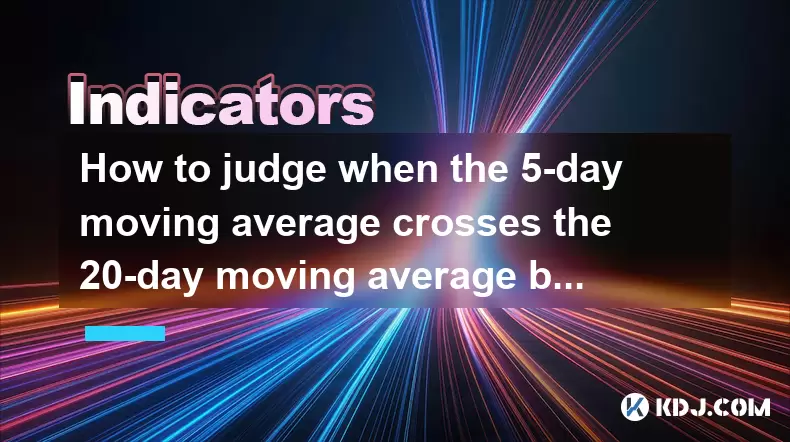
Understanding the Basics of Moving Averages and RSI
In technical analysis, moving averages are essential tools used to identify trends in price movements. The 5-day moving average (MA) is a short-term indicator that reflects recent price action, while the 20-day MA offers a broader perspective over a longer period. When these two lines intersect, it's known as a crossover, which can signal potential trend reversals.
The Relative Strength Index (RSI), on the other hand, measures the speed and change of price movements to determine whether an asset is overbought or oversold. Typically displayed on a scale from 0 to 100, an RSI reading above 70 suggests overbought conditions, while below 30 indicates oversold conditions.
When the 5-day MA crosses above the 20-day MA, this is often seen as a bullish signal, suggesting a potential upward trend. Conversely, when the 5-day MA crosses below the 20-day MA, it’s considered bearish, signaling a possible downturn.
However, if the RSI simultaneously shows top divergence, it introduces a layer of complexity to the interpretation. Divergence occurs when the price makes a new high, but the RSI fails to reach a corresponding high, indicating weakening momentum.
Identifying Top Divergence in RSI
To effectively judge when a top divergence appears alongside a moving average crossover, traders must first learn how to spot divergence patterns. In the context of RSI, top divergence typically forms during uptrends when the price reaches higher highs, but the RSI creates lower highs.
This discrepancy suggests that although the price continues to rise, the underlying momentum is waning. To confirm this pattern, you should:
- Look for at least two swing highs on the price chart.
- Compare these highs with the corresponding RSI values.
- If the second high is higher than the first, but the RSI reading is lower than its previous peak, you have confirmed top divergence.
This divergence becomes particularly significant when it coincides with a bearish crossover—that is, when the 5-day MA crosses below the 20-day MA. This combination may suggest that the current uptrend is losing strength and could reverse into a downtrend.
Analyzing the Crossover Signal in Context
A simple moving average crossover between the 5-day and 20-day MAs might appear straightforward, but its reliability depends heavily on the surrounding market conditions. Traders shouldn’t act solely based on the crossover itself without considering additional signals such as volume, candlestick patterns, or other indicators like RSI.
In the case where the RSI shows top divergence, the crossover gains more weight as a reversal signal. Here’s how to analyze the situation step by step:
- Confirm the direction of both moving averages before the crossover.
- Observe the slope of the 20-day MA to assess the strength of the prevailing trend.
- Check if the price has been making consistent higher highs or lower lows.
- Verify whether the RSI is showing signs of divergence at the same time.
If all these elements align, especially with RSI divergence, then the probability increases that the crossover isn't just noise but a legitimate shift in momentum.
Interpreting Price Action Around the Crossover
Price action plays a crucial role in confirming whether the moving average crossover combined with RSI divergence is a reliable signal. One way to evaluate this is by analyzing the candlesticks around the point of intersection.
Key points to consider include:
- Whether the price closes significantly beyond the crossover line.
- The presence of long upper or lower shadows indicating rejection of certain price levels.
- Increased trading volume during the crossover, which supports the validity of the signal.
- Any notable candlestick formations such as doji, engulfing patterns, or hammers near the crossover area.
By observing how the price reacts after the 5-day MA crosses the 20-day MA, traders can gain insights into whether the market is likely to continue in the current direction or reverse. If the RSI divergence is present and confirmed, and the price begins to show weakness, this further reinforces the likelihood of a trend change.
Practical Steps to Trade This Scenario
Trading based on this dual condition requires a structured approach. Here’s how you can implement a strategy when you detect a 5-day MA crossing the 20-day MA with concurrent RSI top divergence:
- Set up alerts for when the 5-day MA approaches the 20-day MA.
- Monitor the RSI for any signs of divergence during this period.
- Wait for the crossover to complete and observe the next few candles for confirmation.
- Consider entering a trade only after the price breaks below a key support level or shows strong bearish candlestick patterns.
- Place a stop-loss slightly above the most recent swing high to manage risk.
- Adjust your take-profit level according to your risk-reward ratio.
It’s important to backtest this strategy using historical data to understand how it performs under different market conditions. Also, avoid relying solely on this setup; always incorporate other forms of analysis to increase accuracy.
Frequently Asked Questions
What does it mean when RSI diverges while moving averages cross?
When the RSI shows divergence during a moving average crossover, it means that despite a shift in the short-term trend indicated by the moving averages, the momentum behind the price movement is weakening. This could signal a false breakout or an impending reversal.
Can I use this method for cryptocurrencies other than Bitcoin?
Yes, this method applies to any cryptocurrency with sufficient liquidity and volatility. However, due to varying market behaviors across different coins, it's advisable to test the strategy on multiple assets before applying it consistently.
How do I know if the RSI divergence is valid?
A valid RSI divergence requires at least two clear swing highs or lows on the price chart that don’t align with the RSI readings. Additionally, the divergence should occur near overbought (above 70) or oversold (below 30) levels for stronger confirmation.
Should I ignore the crossover if there's no RSI divergence?
Not necessarily. A crossover without divergence can still be a valid trend continuation or reversal signal depending on the broader market structure. Use RSI divergence as an added filter rather than an absolute rule.
Disclaimer:info@kdj.com
The information provided is not trading advice. kdj.com does not assume any responsibility for any investments made based on the information provided in this article. Cryptocurrencies are highly volatile and it is highly recommended that you invest with caution after thorough research!
If you believe that the content used on this website infringes your copyright, please contact us immediately (info@kdj.com) and we will delete it promptly.
- Bitcoin Price Soars to $106,596: Is This the Recovery We've Been Waiting For?
- 2025-06-25 12:25:14
- XRP Ledger's New Era: Batch Transactions and Token Escrow Take Center Stage
- 2025-06-25 12:45:12
- JasmyCoin: Price Prediction & the Quest for New Highs
- 2025-06-25 12:25:14
- Arctic Pablo Coin: The Meme Coin Primed for Lift-Off? Plus, Bonk & SHIB Updates!
- 2025-06-25 12:45:12
- BigBear.ai, AMD, QuantumScape: Stocks Soar and Solid-State Batteries Get Real!
- 2025-06-25 12:50:13
- Bitcoin, Ethereum, and the Iran-Israel Ceasefire: A Crypto Market Update
- 2025-06-25 13:05:13
Related knowledge
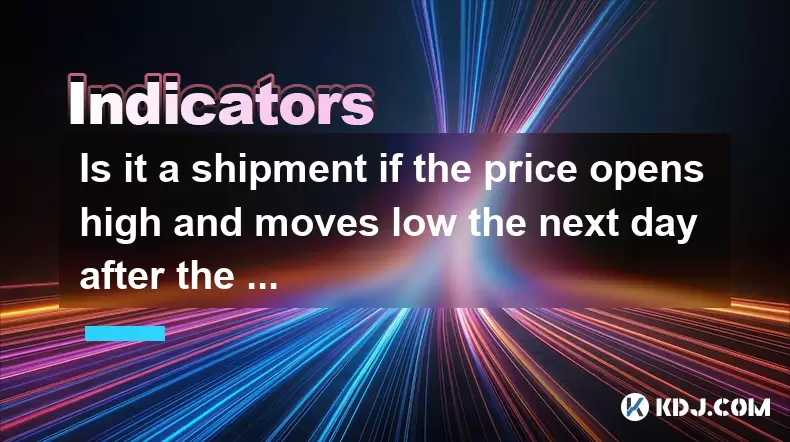
Is it a shipment if the price opens high and moves low the next day after the daily limit with huge volume?
Jun 25,2025 at 12:56pm
Understanding the Concept of a Shipment in Cryptocurrency TradingIn cryptocurrency trading, the term shipment refers to a scenario where large volumes of an asset are sold off rapidly, often leading to a significant price drop. This is typically associated with whale activity or coordinated selling by major holders. When traders observe certain patterns...
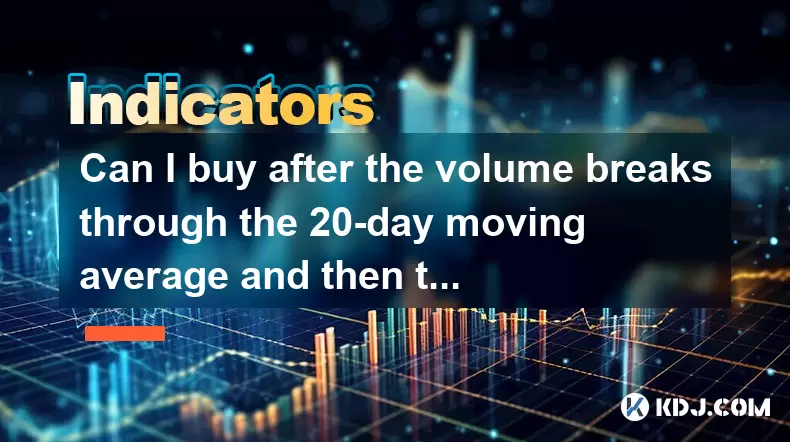
Can I buy after the volume breaks through the 20-day moving average and then the volume shrinks and then the callback is pulled back?
Jun 25,2025 at 12:00pm
Understanding Volume and Moving Averages in Cryptocurrency TradingIn the world of cryptocurrency trading, volume and moving averages are two critical indicators that traders rely on to make informed decisions. The 20-day moving average (MA) is a popular tool used to identify trends and potential entry or exit points. When volume breaks through this aver...
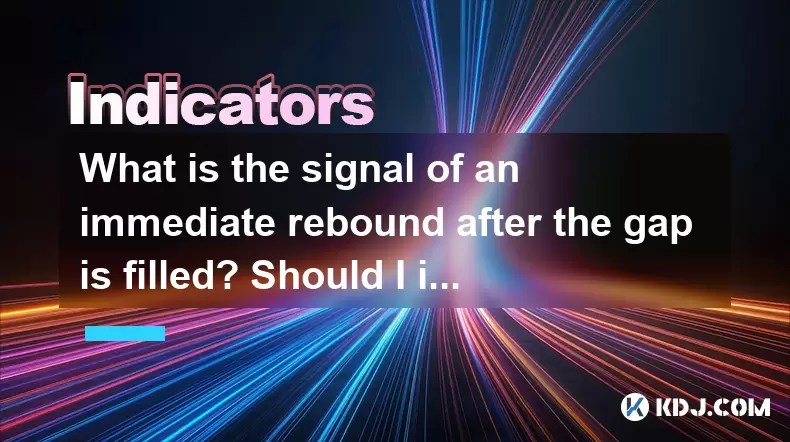
What is the signal of an immediate rebound after the gap is filled? Should I intervene?
Jun 25,2025 at 01:15pm
Understanding Gaps in Cryptocurrency TradingIn cryptocurrency trading, a gap occurs when the price of an asset jumps from one level to another without any trading happening in between. This typically happens during periods of high volatility or after significant news events that impact market sentiment overnight or over weekends. The phenomenon is commo...
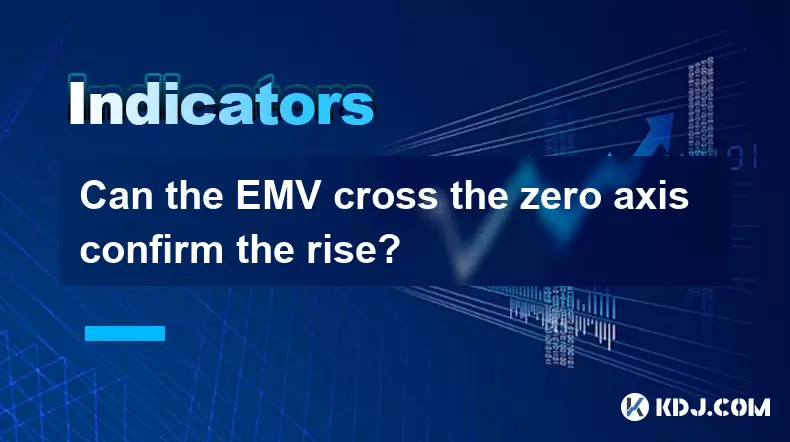
Can the EMV cross the zero axis confirm the rise?
Jun 25,2025 at 11:14am
Understanding the EMV Indicator in Cryptocurrency TradingThe Ease of Movement Value (EMV) is a technical analysis indicator commonly used by traders to assess the relationship between price and volume. In the cryptocurrency market, where volatility is high and trends can reverse quickly, understanding how to interpret EMV becomes crucial for making info...
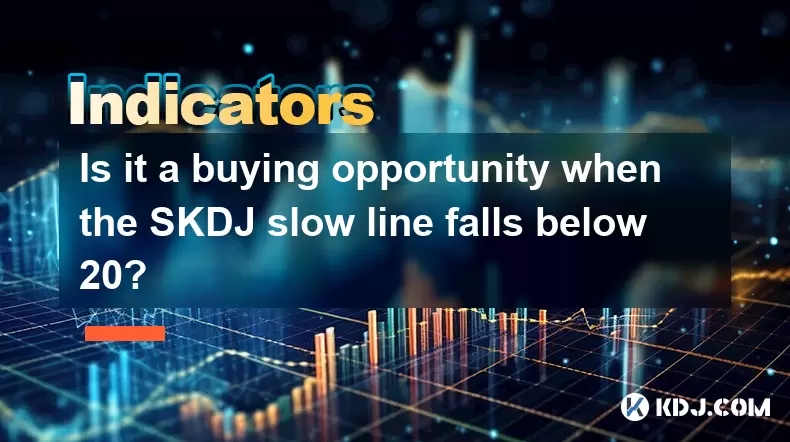
Is it a buying opportunity when the SKDJ slow line falls below 20?
Jun 25,2025 at 01:29pm
Understanding SKDJ and Its Significance in Cryptocurrency TradingSKDJ, or Slow Stochastic Divergence Index, is a technical indicator used by traders to assess momentum and potential reversal points in asset prices. In the context of cryptocurrency trading, where volatility is high and trends can change rapidly, understanding how to interpret SKDJ values...
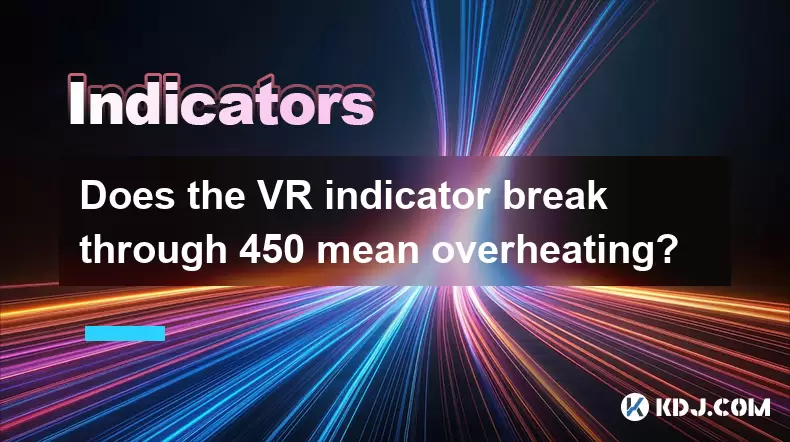
Does the VR indicator break through 450 mean overheating?
Jun 25,2025 at 10:15am
Understanding the VR Indicator in Cryptocurrency AnalysisThe VR indicator, or Volume Ratio, is a technical analysis tool used to assess buying and selling pressure by comparing the volume of up days to down days over a specified period. In cryptocurrency trading, where volatility is high and sentiment shifts rapidly, the VR indicator helps traders ident...

Is it a shipment if the price opens high and moves low the next day after the daily limit with huge volume?
Jun 25,2025 at 12:56pm
Understanding the Concept of a Shipment in Cryptocurrency TradingIn cryptocurrency trading, the term shipment refers to a scenario where large volumes of an asset are sold off rapidly, often leading to a significant price drop. This is typically associated with whale activity or coordinated selling by major holders. When traders observe certain patterns...

Can I buy after the volume breaks through the 20-day moving average and then the volume shrinks and then the callback is pulled back?
Jun 25,2025 at 12:00pm
Understanding Volume and Moving Averages in Cryptocurrency TradingIn the world of cryptocurrency trading, volume and moving averages are two critical indicators that traders rely on to make informed decisions. The 20-day moving average (MA) is a popular tool used to identify trends and potential entry or exit points. When volume breaks through this aver...

What is the signal of an immediate rebound after the gap is filled? Should I intervene?
Jun 25,2025 at 01:15pm
Understanding Gaps in Cryptocurrency TradingIn cryptocurrency trading, a gap occurs when the price of an asset jumps from one level to another without any trading happening in between. This typically happens during periods of high volatility or after significant news events that impact market sentiment overnight or over weekends. The phenomenon is commo...

Can the EMV cross the zero axis confirm the rise?
Jun 25,2025 at 11:14am
Understanding the EMV Indicator in Cryptocurrency TradingThe Ease of Movement Value (EMV) is a technical analysis indicator commonly used by traders to assess the relationship between price and volume. In the cryptocurrency market, where volatility is high and trends can reverse quickly, understanding how to interpret EMV becomes crucial for making info...

Is it a buying opportunity when the SKDJ slow line falls below 20?
Jun 25,2025 at 01:29pm
Understanding SKDJ and Its Significance in Cryptocurrency TradingSKDJ, or Slow Stochastic Divergence Index, is a technical indicator used by traders to assess momentum and potential reversal points in asset prices. In the context of cryptocurrency trading, where volatility is high and trends can change rapidly, understanding how to interpret SKDJ values...

Does the VR indicator break through 450 mean overheating?
Jun 25,2025 at 10:15am
Understanding the VR Indicator in Cryptocurrency AnalysisThe VR indicator, or Volume Ratio, is a technical analysis tool used to assess buying and selling pressure by comparing the volume of up days to down days over a specified period. In cryptocurrency trading, where volatility is high and sentiment shifts rapidly, the VR indicator helps traders ident...
See all articles
























































































